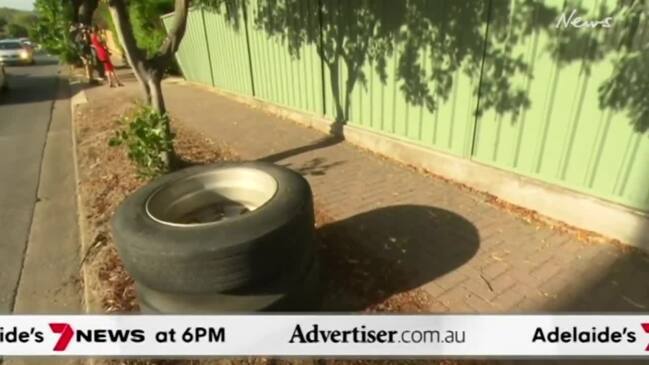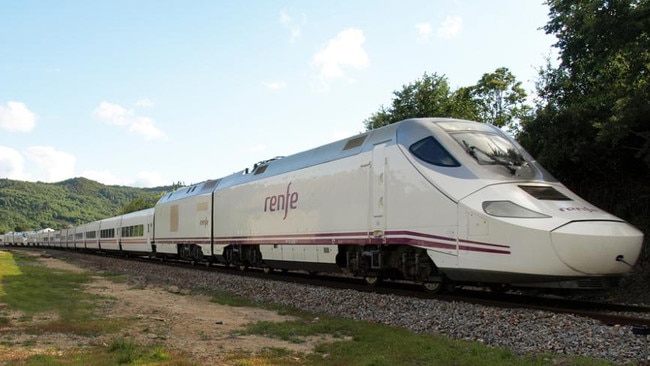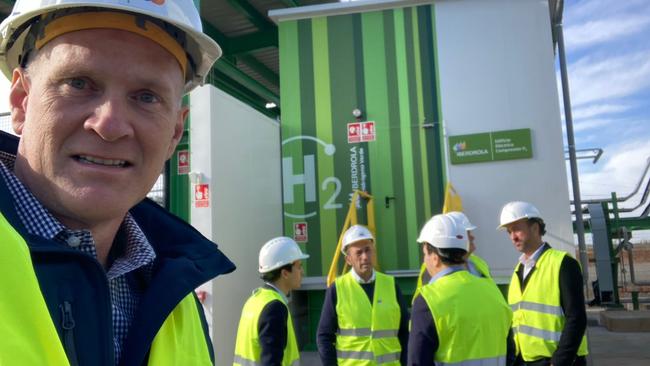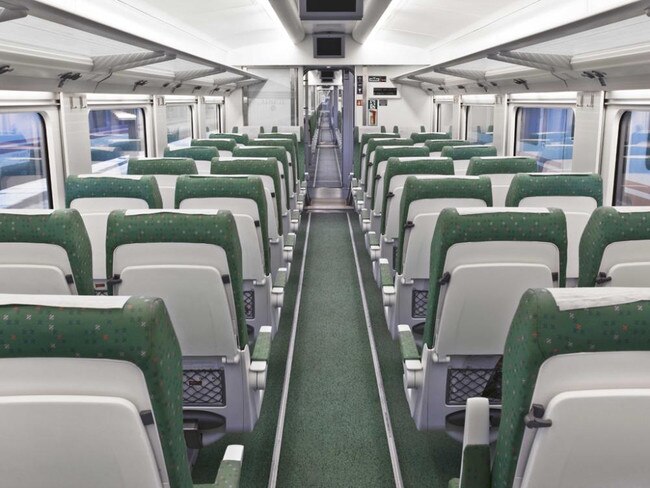Business case for ‘mass transit to Hills’ underway, as new details about Talgo train trial revealed
Officials from a Spanish train builder were “shocked” they couldn’t go 160km/h through the Hills during discussions for a passenger rail trial, a committee has heard.

SA News
Don't miss out on the headlines from SA News. Followed categories will be added to My News.
Officials from a Spanish train manufacturer proposing a train trial between the Hills and Adelaide’s CBD would have been “shocked” by the winding nature of the terrain – and that the track’s speed limit was 115km/h, the transport department CEO says.
It comes as department officials say they are working on a business case for “mass transit options to Mount Barker”.
High-speed locomotive manufacturer Talgo is pushing ahead with its trial, asking the Spanish government for more money after the state government agreed to allow it to test its unique tilt trains – but at no cost to the SA taxpayers.
The trial aims to ease traffic congestion and comes amid a transport study for the Adelaide Hills.
It would cost in excess of three million Euro – about AUD$5m, department CEO Jon Whelan told parliament’s Budget and Finance committee on Monday.
The trial appeared to be in doubt after Transport Minister Tom Koutsantonis said Talgo officials appeared to have thought Mount Barker was larger in population, and further from the CBD.

Under questioning from Upper House Frank Pangallo, Mr Whelan told parliament’s Budget and Finance committee on Monday Talgo would have been “shocked by the windy, constrained hills environment”.
“At that meeting they were surprised that they wouldn’t be able to run a train in excess of 160 km/h on that route to get the travel times that were being purported around the industry and around the state at that time,” he said.
“It would have been a shock to them that they could not do more than 160 km/h, and it would have been a shock that this is quite a windy, constrained hills environment where you can’t run at that speed.
“Their initial interpretation to run through the Hills was to bring their tilt trailer over – no locomotive, no-one to drive it, no-one accredited to drive it.
“In the process of meeting the rail certification and rules, they need an operator, which they still have not established.
“It will have its challenges to satisfy them – and the Office of the National Rail Safety Regulator needs to be satisfied that trial can be done safely.”

Mount Barker’s population continues to boom, with the local council forecasting last week about 65,000 people living in the area by 2046 – 20,000 more than today.
As the area grows, so does traffic congestion on the South-Eastern Freeway, with Mr Koutsantonis saying a return to rail in the Hills was not “off the table”.
The transport department is adding 600 more services and buses, but Mr Pangallo has accused it of being “wedded to bitumen”.
He asked Mr Whelan whether Talgo had raised with him their interest in trialling a high-speed trains between Adelaide and Melbourne.
“Their ultimate would be to run high-speed rail across Australia, and that includes Adelaide to Melbourne but also a big bit of their drive was over in the Eastern States as well,” Mr Whelan said.
The committee also heard work had started on a business case to address mass transit problems in the Hills – and a wider draft transport study for the region.
The department’s executive director of transport planning Andrew Excell said he hoped a ‘what we heard’ report into transport needs for the Hills would be released mid-2024 and the draft transport study at the same time.
“As part of that study, one of the key things we are going to do, and have already commenced on, is undertaking a business case for mass transit options to Mount Barker, to the Adelaide Hills,” he told the committee.
“That would obviously bring into the view of trains and/or buses, so we are looking at all methods of mass transit. To do that, we already have some of our rail consultants to start working options in terms of geometries of the (rail) track.
“To get that information together, we work closely with ARTC, as it is their track, and then we look at other options in terms of how the trains will operate with freight rail services as well.”

Mr Excell said a major problem facing reinvigorating rail travel from the Hills to the city was “sharing” the ARTC track, which runs freight trains across it.
“(Freight) come at different times through the Hills,” he said. “We know there are freight issues with the rail through the Hills, so that’s what the business case is going to work on.
“It’s going back earlier and understanding what the issues and the problems are and then actually working towards what the solution is, rather than jumping to a solution.”
Mr Excell said part of the mass transit study was to understand “how people move around Adelaide Hills”.
“There are a lot, we understand, moving through the Hills; there are a lot that come out of the bottom of the Hills and then spread across Adelaide and then we know there is quite a big cohort going straight to the city who are, generally, students.”
More Coverage
Originally published as Business case for ‘mass transit to Hills’ underway, as new details about Talgo train trial revealed





